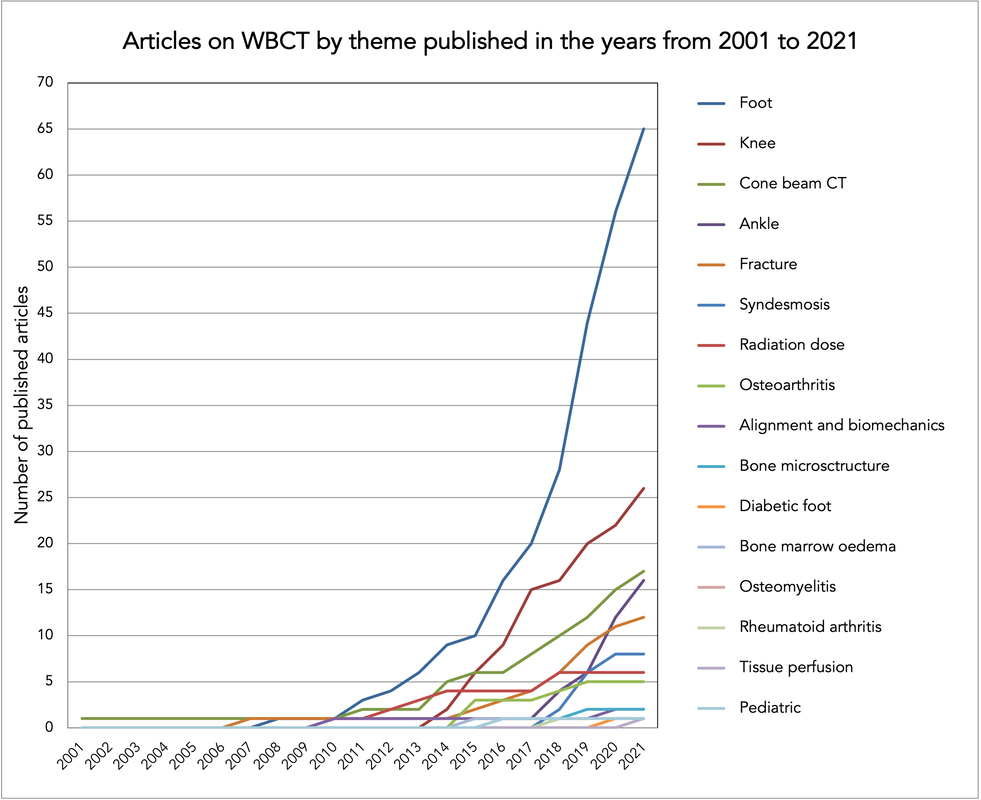By Signe Brinch and Philip HansenBispebjerg and Frederiksberg Hospital, Copenhagen, Denmark Over the last decade, weight bearing CT (WBCT) of the lower extremity has been gaining momentum in evaluation of the foot/ankle and knee - see the figure for the number of WBCT publications across all topics over the years from 2001 to 2021. A growing number of international studies have been investigating the use WBCT in different clinical scenarios, which is promising for improving our understanding of functional anatomy and biomechanics during simulated natural loading of the lower extremity. However, as with any new technology, there is risk of excessive enthusiasm about the capabilities of WBCT leading to risk of premature application before sufficiently robust scanning protocols are in place. Our recent article focuses on the challenges and caveats concerning the implementation of WBCT, and identifies the work left to obtain robust standardised limb positioning, standardised imaging plane reconstruction, choice of anatomical landmarks and image slices used for radiological measurements, many of which are known to be dependent on such factors. Hence, there is a risk of introducing unintended measurement variation in absence of standardization.
If we ignore the issue of standardisation, the value of introducing WBCT in research and clinical practice will be limited. Measurements of bone and joint geometry in WBCT are often influenced by joint positioning and magnitude of loading, which are factors that need to be considered within a 3-D coordinate system. Some (but not all) WBCT studies examine inter- and intraobserver reproducibility for different radiological measurements at the foot/ankle and knee with reproducibility generally reported to be high. These are often quantified by the intraclass correlation coefficient (ICC), but without adequate information on the specific ICC model used and confidence intervals necessary to correctly interpret ICC values. Often reproducibility is only measured for a specific joint position rather than the more relevant reproducibility of changes between non-WB and WB conditions. Importantly, investigations of test-retest repeatability are also lacking, which is a highly relevant reliability parameter since measurements are often used to study changes over time such as pre- versus postoperative scanning following correctional surgery. In the absence of standardised protocols, the current capability of WBCT technology to evaluate factors such as the effects of surgery or structural disease progression is questionable. In our paper we present an overview of the relevant literature on WBCT in the lower extremity with emphasis on factors that may affect measurement reproducibility in the foot/ankle and knee. We also seek to illustrate the downsides of performing WBCT without consensus on imaging procedure and measurement protocols.
0 Comments
Leave a Reply. |
Archives
May 2024
Categories
|

 RSS Feed
RSS Feed